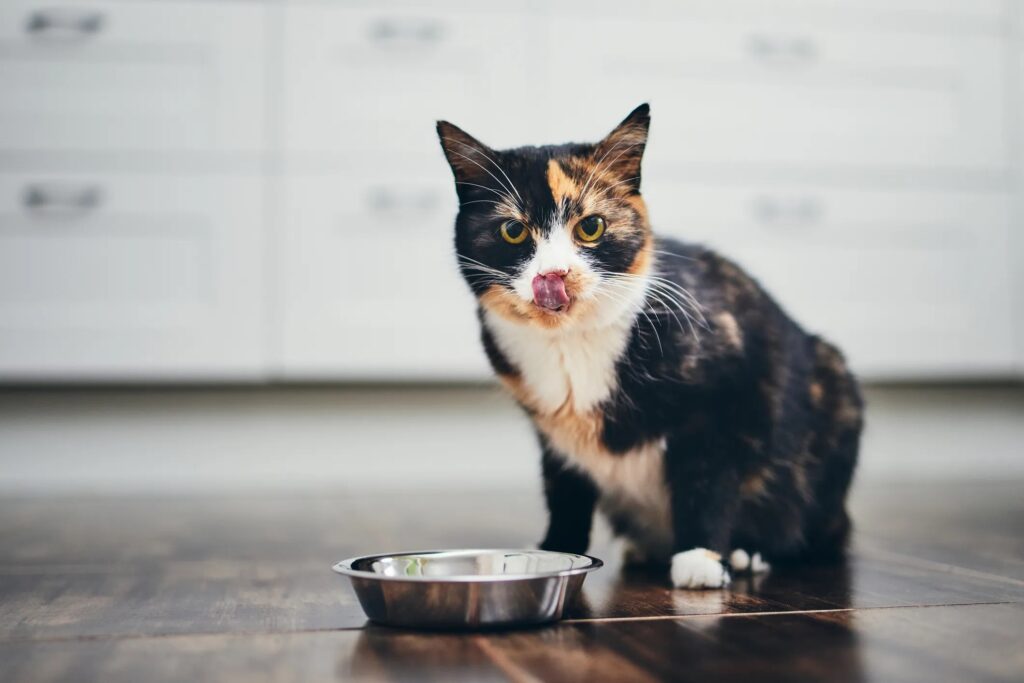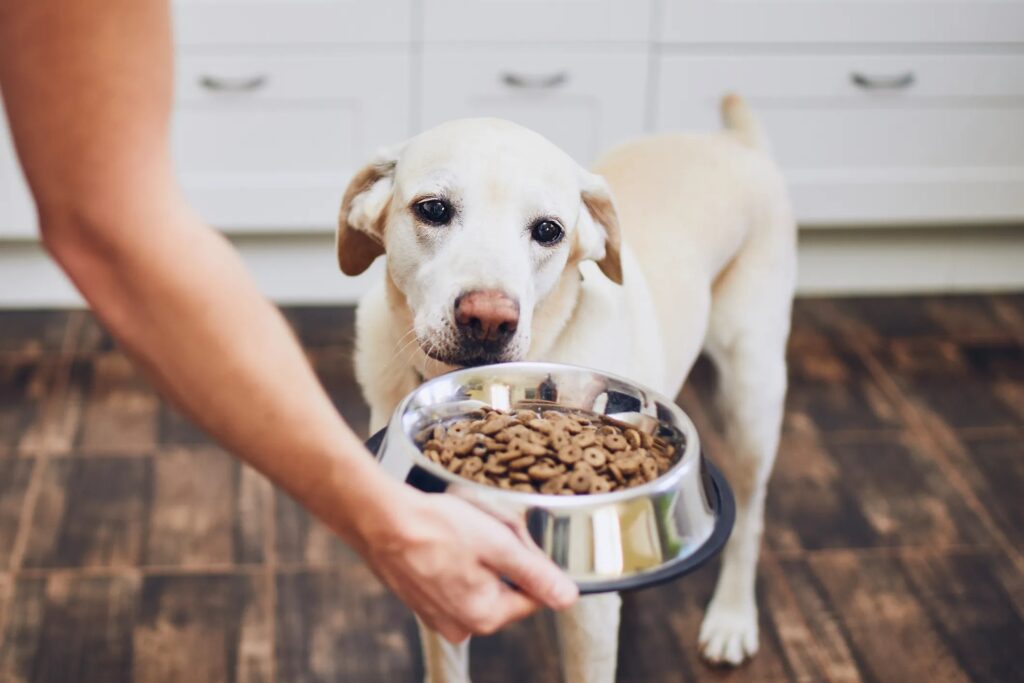Many people started 2021 with a resolution to eat a more healthful diet — a commitment that also should be extended to our pets.
Just like people, some dogs and cats could resolve to eat better in the new year. And that responsibility falls on their owners.
Is your dog or cat suffering from food allergies, experiencing weight gain or transitioning into adulthood? If so, it’s time to take a closer look at what he’s eating. After all, changing pet foods can make your pet happier and healthier.
So, how do you know when it’s time to try a new pet food? Here are some questions to consider.
Is your pet growing up from a puppy or kitten into an adult?
Puppies and kittens require more calories, protein and nutrients than their adult counterparts, so they should consume puppy or kitten food until they have stopped growing. But when is it time to make the switch to adult food? It depends on their breed.
Smaller cat breeds, such as Siamese and Abyssinian, are considered adults when they are 1 year old; larger breeds, such as Maine Coons and ragamuffins, take longer to reach maturity and aren’t ready for adult food until 18 months to 2 years of age. A food, such as Farmina, provides the right nutrition for both kittens and their mom. Plus, the brand offers dry foods for adult breeds.
Your dog’s breed also determines when it’s time to change foods. Small- and medium-sized breeds, such as poodles and beagles, are usually considered adults around 9 months old. Larger breeds, such as golden retrievers, reach maturity around 15 months of age, and very large breeds, such as Great Danes, are usually ready for adult dog food between 18 months and 2 years old. Be sure to feed your puppy a food that contains a high percentage of protein and fat, such as Orijen Puppy dry dog food or Fromm. When he’s ready, transition him to one of the brand’s dry adult dog foods.
Does your pet have food sensitivities and allergies?

Just like people, dogs and cats can develop an allergic reaction to their pet food – even if they’ve been eating it for a while without any issues.
It’s a good idea to confirm with your veterinarian if your pet has any of the symptoms of a food allergy or intolerance – itching, swelling, diarrhea, vomiting or even chronic ear infections – which also can be a sign of other medical conditions.
Dogs that have food allergies generally have red, itchy skin near their ears, stomach and paws. Some will even develop hives. Cats frequently experience itching on their head and neck, and sometimes they will develop fluid-filled cysts. Dogs and cats usually will bite and lick the itchy area, which can cause them to lose their fur.
Pets that have food sensitivities will often have diarrhea, bloating or unusual changes to their stool. A dog food, such as Gentle Balance by Natural Balance, or a cat food, such as Royal Canin FBN Digestive Care, helps support healthy digestion.
If your vet determines that your pet has a food allergy or that he has food sensitivities, he or she will recommend changing your pet’s food and will suggest the best way to transition your pet’s diet.
Is your pet gaining weight?
Many people have packed on pounds during the pandemic – and the same is true for our pets. And just like people, a pet’s excess weight can cause serious health issues, including diabetes, heart disease and joint issues.
Dogs and cats who have gained weight could benefit from switching to a diet pet food. These foods generally are high in protein and lower in fat and calories. Look for those that include probiotics, which can help your pet digest his food properly.
Earthborn Holistic Weight Control dry dog food helps to control weight gain in dog breeds of all sizes, while Instinct by Nature’s Variety Raw Boost Healthy Weight grain-free recipe includes real chicken for a taste that cats love.
Is your pet entering his ‘golden years’?

Just as puppies and kittens have specific dietary needs, older pets have their own unique food requirements.
When dogs are between 6 to 10 years old, they begin to enter their senior years – with larger breeds entering beginning well before their smaller counterparts. And, as they age, they become prone to obesity, joint pain and stomach issues. Look for a senior dog food – which is usually high in fiber, low in calories and contains glucosamine for joint health. Iams ProActive Health Mature Adult dog food is made with real chicken and helps protect bones and joints.
Older cats, too, can benefit from a senior cat food. Cats begin to show age-related changes between 7 to 12 years of age. This can include weight gain, memory changes or even a loss of teeth. Choosing the right senior cat food can help your feline companion maintain her ideal body weight, slow chronic illness and even make it easier for her to chew her food. Blue Buffalo Wilderness Mature chicken recipe grain-free dry cat food is a great and tasty option for older cats.
Talk to your veterinarian about the best time to switch your pet to a senior diet.
To learn more about when it’s time to change your pet’s food, visit premierpetsupply.com



